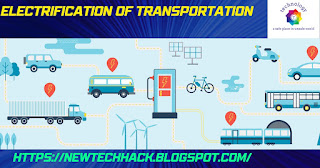New energy solutions
refer to innovative and sustainable approaches to meeting the world's energy needs while minimizing environmental impact and reducing reliance on fossil fuels. These solutions focus on renewable energy sources, energy efficiency, and advanced technologies. Here are some key new energy solutions:
1. Renewable Energy Sources:
Renewable energy sources, such as solar, wind, hydro, geothermal, and biomass, play a significant role in new energy solutions. These sources provide clean and abundant energy that can be harnessed without depleting natural resources or contributing to greenhouse gas emissions. The development and widespread adoption of renewable energy technologies are essential for transitioning to a low-carbon and sustainable energy system.
2. Solar Power:
Solar power utilizes photovoltaic (PV) technology to convert sunlight directly into electricity. It involves the installation of solar panels, either on rooftops or in large solar farms, to capture solar energy. Advances in solar panel efficiency, energy storage systems, and grid integration have made solar power more cost-effective and accessible, enabling its widespread deployment.
3. Wind Power:
Wind power harnesses the kinetic energy of the wind to generate electricity. Large-scale wind farms, consisting of multiple wind turbines, capture the wind's energy and convert it into electricity. Advances in wind turbine design, including larger and more efficient turbines, have improved the cost-effectiveness and performance of wind power, making it a significant contributor to global renewable energy capacity.
4. Hydroelectric Power:
Hydroelectric power harnesses the energy of moving water to generate electricity. It involves the construction of dams or barrages that create water reservoirs. The force of the flowing or falling water is used to turn turbines, which generate electricity. Hydroelectric power is a reliable and mature renewable energy source, with both large-scale hydropower plants and small-scale micro-hydropower systems being utilized worldwide.
5. Geothermal Energy:
Geothermal energy utilizes the heat from the Earth's interior to generate electricity or provide heating and cooling. Geothermal power plants extract hot water or steam from underground reservoirs to power turbines and produce electricity. Geothermal heat pumps use the stable temperature of the ground to provide heating and cooling for buildings. Geothermal energy is a reliable and sustainable resource that is available in certain geologically active regions.
6. Biomass Energy:
Biomass energy utilizes organic matter, such as agricultural residues, forestry waste, or dedicated energy crops, to produce heat, electricity, or biofuels. Biomass can be burned directly or converted into biogas, bioethanol, or biodiesel through various processes. Biomass energy helps reduce waste and reliance on fossil fuels while providing a renewable energy source.
7. Energy Efficiency:
Energy efficiency measures play a crucial role in new energy solutions. By improving energy efficiency in buildings, transportation, and industrial processes, energy consumption can be minimized while maintaining productivity and comfort. Energy-efficient technologies, such as LED lighting, smart thermostats, energy-efficient appliances, and efficient industrial equipment, contribute to reducing energy demand and greenhouse gas emissions.
8. Energy Storage:
Energy storage technologies, such as batteries, pumped hydro storage, and thermal storage, are essential for enabling the integration of intermittent renewable energy sources into the grid. Energy storage allows for the capture and utilization of excess energy during periods of high generation and its release during times of high demand, ensuring a reliable and stable energy supply.
9. Smart Grid and Grid Modernization:
The smart grid refers to an intelligent electricity distribution system that incorporates advanced communication, control, and monitoring technologies. It enables two-way communication between the utility and consumers, optimizing energy generation, consumption, and distribution. Grid modernization efforts aim to enhance the efficiency, reliability, and flexibility of the electricity grid to accommodate the integration of renewable energy sources and promote energy management.
10. Electrification of Transportation:
The electrification of transportation, including electric vehicles (EVs) and charging infrastructure, is a key component of new energy solutions. EVs offer a cleaner and more energy-efficient alternative to traditional internal combustion engine vehicles, reducing carbon emissions and reliance on fossil fuels. The deployment of EV charging infrastructure is vital to support widespread adoption and encourage the transition to electric transportation.
In summary, new energy solutions encompass a wide range of innovative approaches to address the world's energy challenges. By embracing renewable energy sources, improving energy efficiency, deploying energy storage, and modernizing grids, these solutions promote sustainability, reduce greenhouse gas emissions, and create a more resilient and sustainable energy future.
















No comments:
Post a Comment